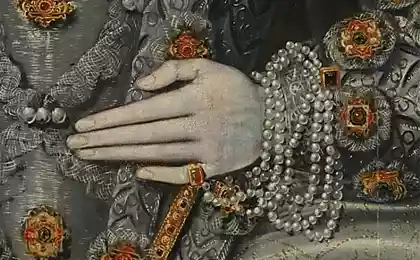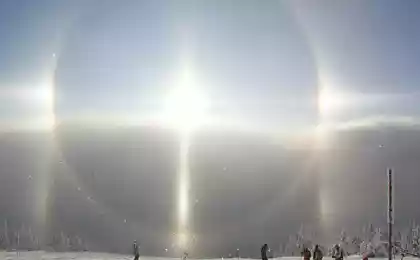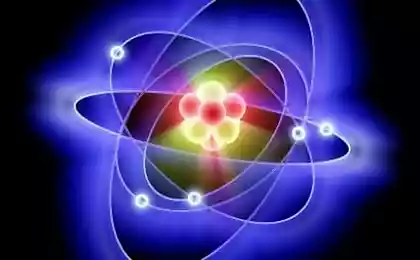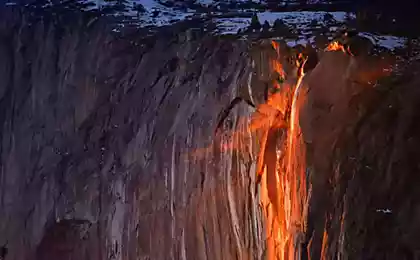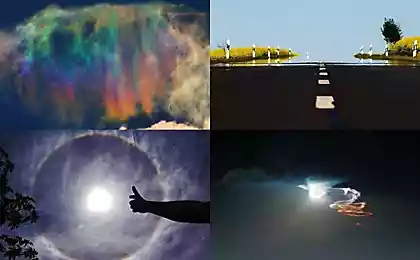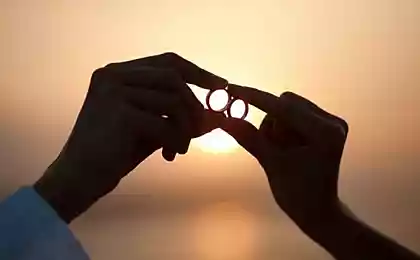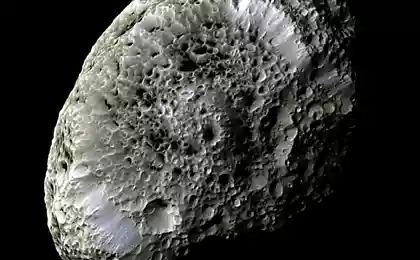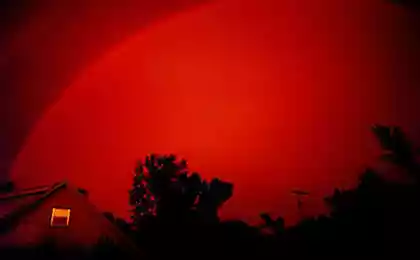438
A luminous ring or halo in nature
The ring of light (halo) visible, typically around the Sun or moon, and sometimes around other powerful sources called halo. There are many types of halos, but they are mostly caused by ice crystals in Cirrus clouds at a height of 5-10 km in the upper troposphere.
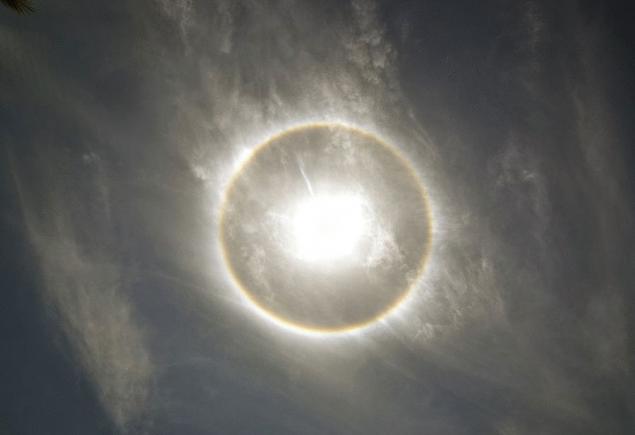
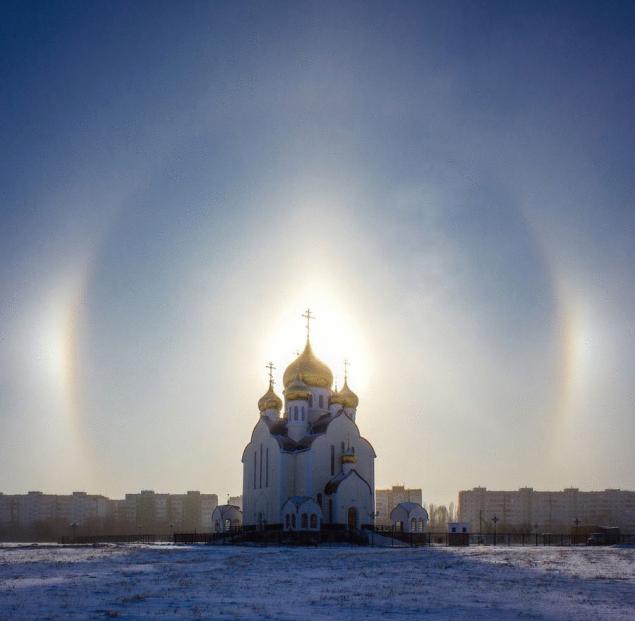
The form of the observed halo depends on the shape and arrangement of crystals. Reflected and refracted by the ice crystals, the light often turns into a spectrum, which makes halo look like a rainbow, but a halo in low light has a low chroma, which is associated with the peculiarities of twilight vision.
In the old days a variety of halos, and other celestial phenomena, ascribed mystical significance of the signs (usually bad, especially if halo took the cruciform shape, which was interpreted as a cross or sword, and twins lights), so there are many Chronicles of the evidence. So in "the Word about Igor's regiment" explains that before the onset of the Polovtsy and the capture of Igor "four sun shone over the Russian land," which was seen as a sign of impending big trouble. And in 1551, after a long siege by the troops of Emperor Charles V in the German city of Magdeburg in the sky above the city appeared halo with the false suns. This caused a stir among the besiegers. Since halo was perceived as a "heavenly sign" in defense of the besieged, Charles V ordered to lift the siege of the city.
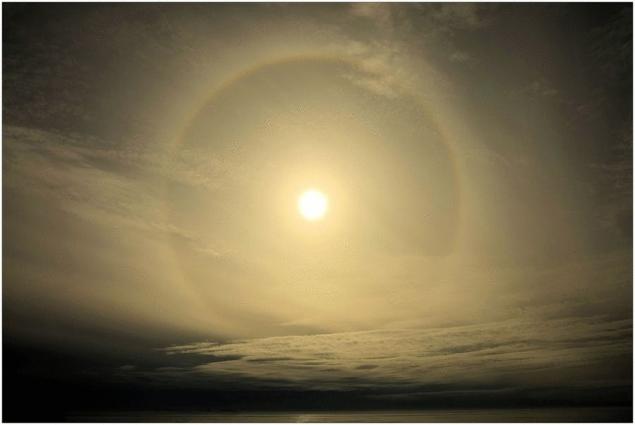
In the days when the meteorology did not exist, halo and similar optical phenomena were used to predict the weather. For example, the Russian national signs say that the appearance around the moon like the light rings, arcs, spots, pillars to rain, and Chuvash — it gets cold (usually in winter).
A major contribution to the study and systematization of the halo made by the Dutch astronomer Marcel Minnaert.
It is necessary to distinguish halo from crowns. The latter have a smaller angular size (up to 5°), and due to diffractive scattering rays of light in water droplets forming a cloud or fog.
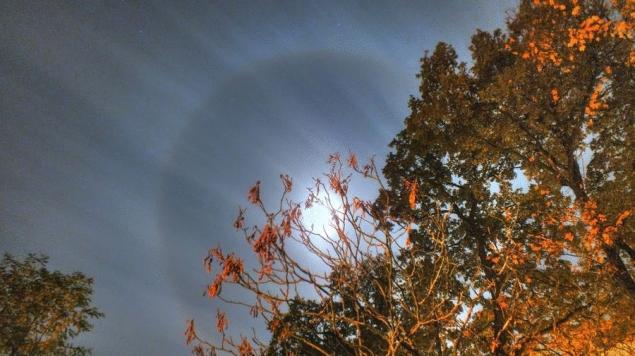
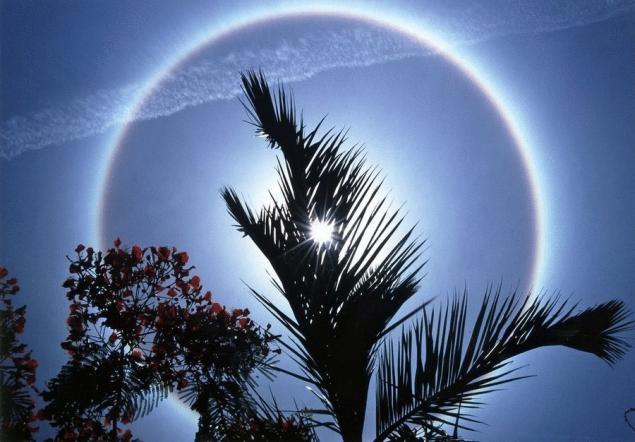
Source: /users/104


The form of the observed halo depends on the shape and arrangement of crystals. Reflected and refracted by the ice crystals, the light often turns into a spectrum, which makes halo look like a rainbow, but a halo in low light has a low chroma, which is associated with the peculiarities of twilight vision.
In the old days a variety of halos, and other celestial phenomena, ascribed mystical significance of the signs (usually bad, especially if halo took the cruciform shape, which was interpreted as a cross or sword, and twins lights), so there are many Chronicles of the evidence. So in "the Word about Igor's regiment" explains that before the onset of the Polovtsy and the capture of Igor "four sun shone over the Russian land," which was seen as a sign of impending big trouble. And in 1551, after a long siege by the troops of Emperor Charles V in the German city of Magdeburg in the sky above the city appeared halo with the false suns. This caused a stir among the besiegers. Since halo was perceived as a "heavenly sign" in defense of the besieged, Charles V ordered to lift the siege of the city.

In the days when the meteorology did not exist, halo and similar optical phenomena were used to predict the weather. For example, the Russian national signs say that the appearance around the moon like the light rings, arcs, spots, pillars to rain, and Chuvash — it gets cold (usually in winter).
A major contribution to the study and systematization of the halo made by the Dutch astronomer Marcel Minnaert.
It is necessary to distinguish halo from crowns. The latter have a smaller angular size (up to 5°), and due to diffractive scattering rays of light in water droplets forming a cloud or fog.


Source: /users/104
The splendor of the underwater world in a series of photographs of the "Sea"
The deepest cave in the world for sale
